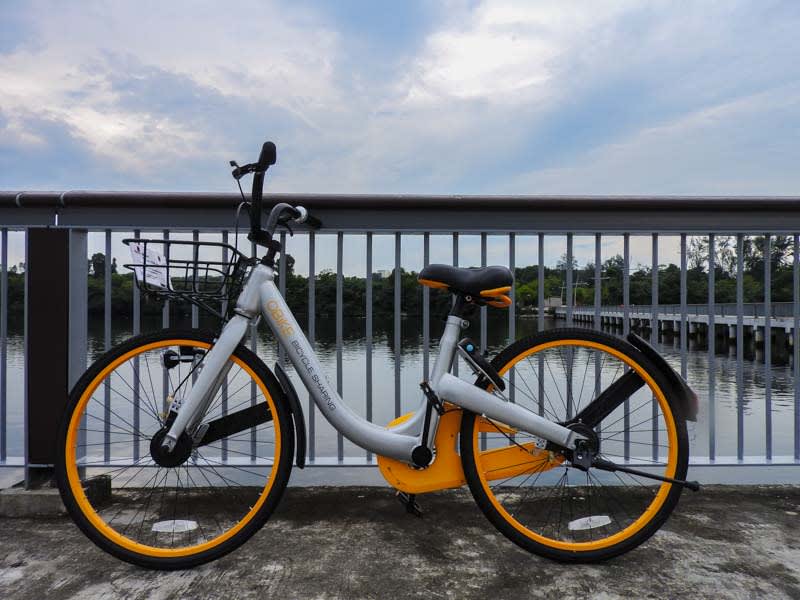Pondering what oBike and other dockless cycle schemes mean for Melbourne
Last week oBike - a Singaporean-based dockless bike sharing scheme - began a pilot in Melbourne. It's the first of what may be many private-sector bike sharing schemes that could start to proliferate the public realm right across the city and it's worth pondering what this means for the transport network and for local government.
In a nutshell, the system works like this: you download the app on your phone, sign up (which includes a one-time deposit), and then find a bike near you in the app's map user interface. You can reserve a bike near you for ten minutes or if you're near a bike, you can reserve through the app and then scan a QR on the bike's handlebars to unlock it.
The unlocking process gives you access to a helmet that comes with the bike and then you're free to make your trip. At the end of the trip, you go back into the app and then lock the bike; your account will then be debited the charge for the time you've used on the bike.
As wearing a helmet is required to legally ride a bike in Victoria, oBike are starting off on the right foot by providing them for free. Whether the helmets indeed stay with each bike is another story, but it goes a long way to removing the inconvenience factor of cycling on short trips, especially if you intend to use oBike as an extension of the public transport network.
Also benefitting oBike, according to the report in The Age, is the intention to expand the bike-sharing scheme to areas that aren't even covered by the existing Melbourne Bike Share Scheme. Brunswick and South Yarra are notable for having no coverage at present.
And the dockless concept lends itself to providing coverage areas beyond the more densely populated areas right out into the middle ring and perhaps some outer ring suburbs. Especially if councils or the state government incentivise concentrations of bikes at stations.
All that new space under each of the new elevated stations on the Dandenong corridor, for example, are candidates for dedicated mass bike parking areas.
And what to do if oBike and any subsequent competing schemes are embraced take off? Might we go down the Amsterdam path?
We've got time before we'll need anything like they have in Amsterdam, but it's conceivable infrastructure will need to change both in the inner city and elsewhere. Natural destinations for bikes like the Queen Victoria Market, Flinders Street, Southern Cross, The MCG, Richmond Station, North Melbourne Station, Crown and many other points in Southbank and Docklands could see a lot of footpath congestion if there's no decent way to manage an influx of bikes.
And what should we do if things get that popular that people can barely walk down streets because footpaths are overflowing with parked bikes? It would seem it's fun times ahead for councils under a scenario where private bike share schemes are embraced en masse.
Working on the assumption that many of these new operators will expand into multiple Australia cities, a nationally consistent database of bike infrastructure might have a sharpened focus. Knowing where each piece of bike infrastructure is - from bike lanes and trails to footpath hoops and new spaces to be created for an increasing amount of parked bikes - would be valuable for app developers to use.
If one council wants bike share users to utilise new parking spaces over leaving bikes randomly locked to road-side posts, the council need only flag it in the database and the bike share apps can then use this information and direct users to those areas.
Anonymised usage data would conversely be extremely useful for transport planners and encouraging each bike share scheme operator to open this data up would be informative for the public debate on transport policy.
Over to you.
Lead image credit: Twitter: @Australiaobike
